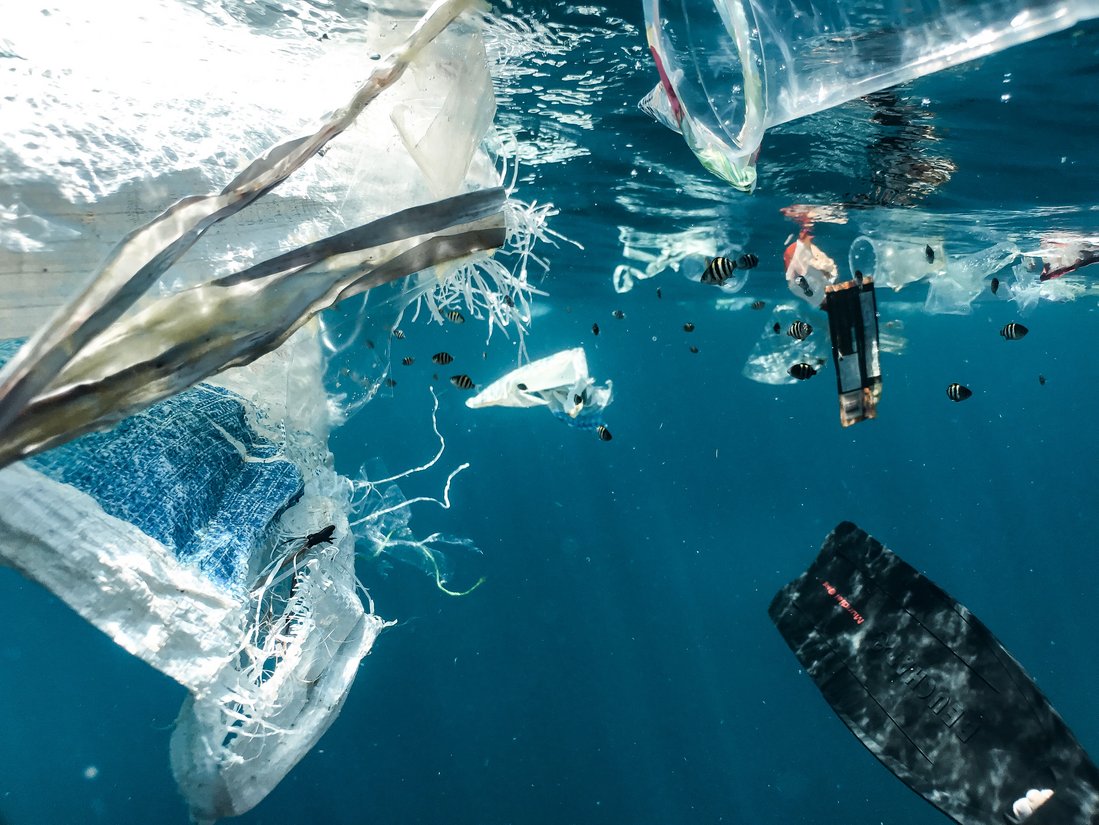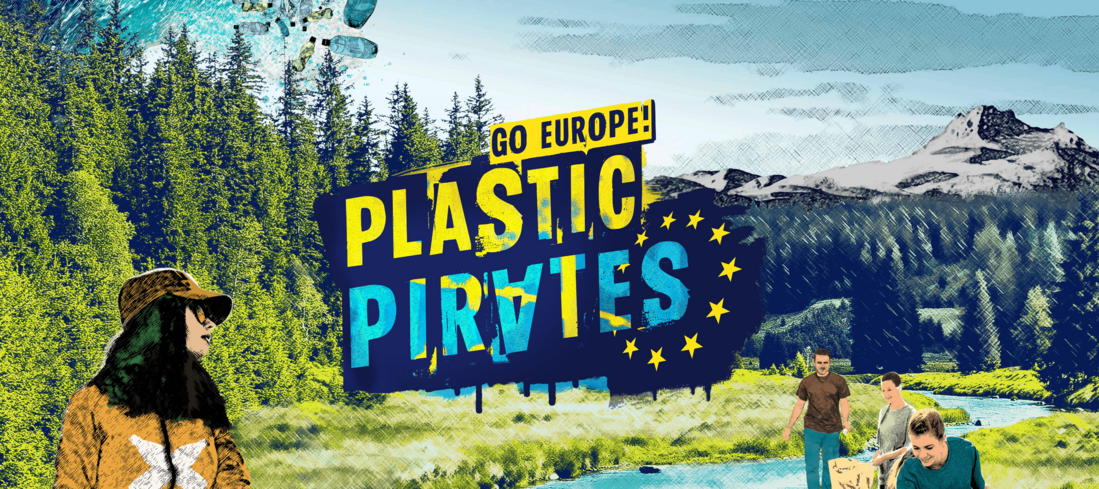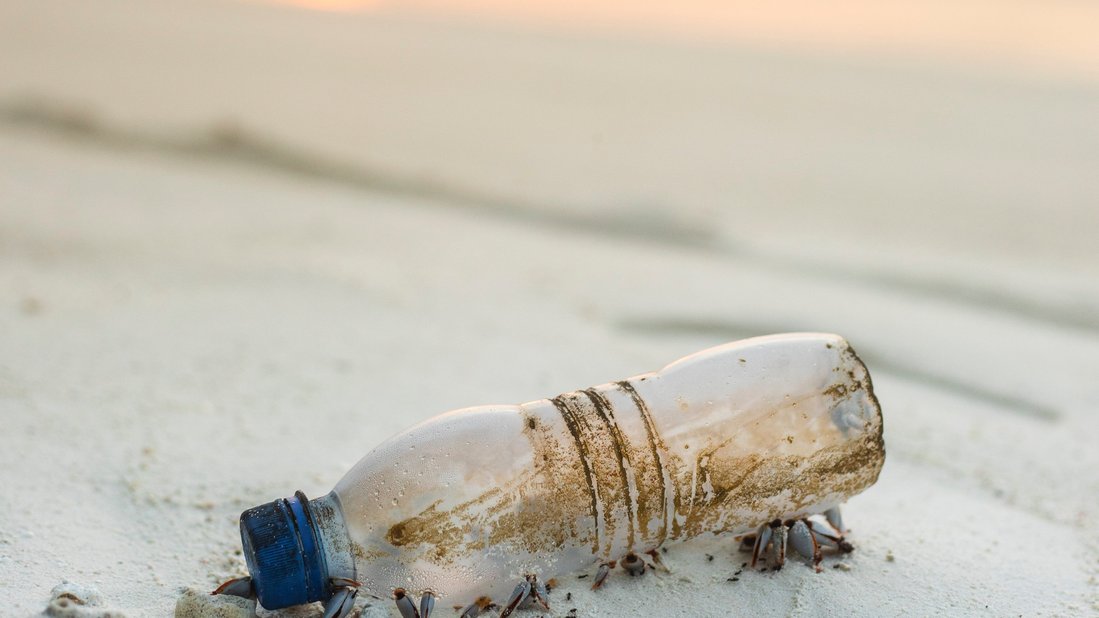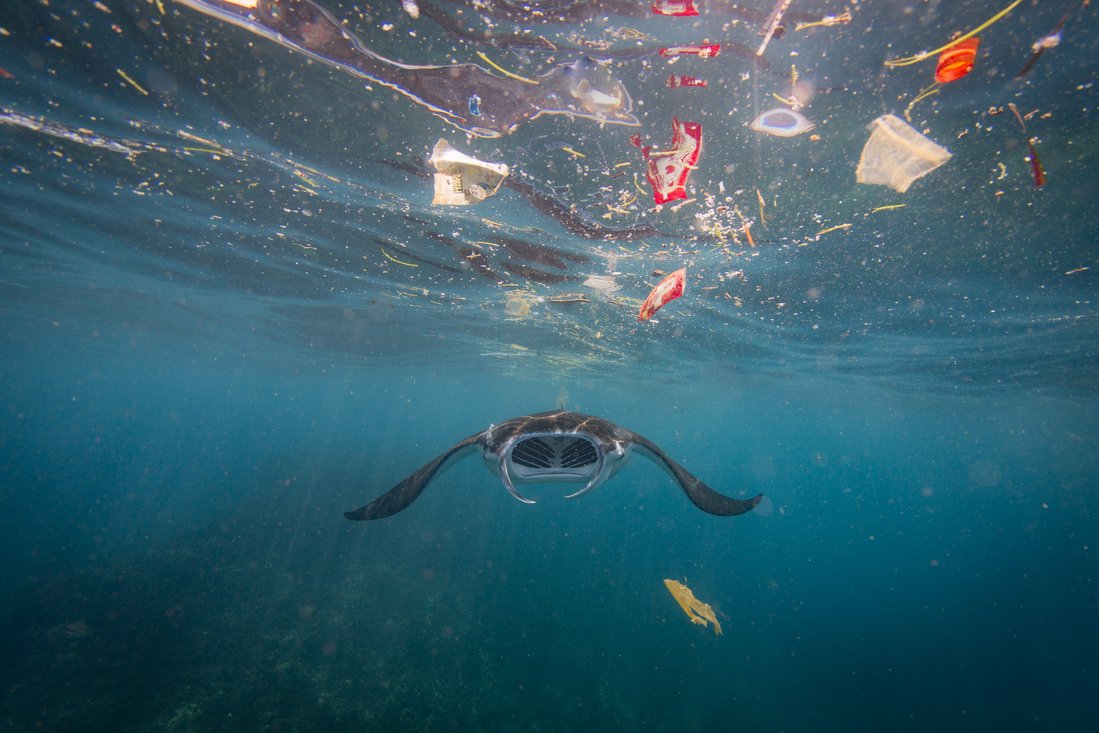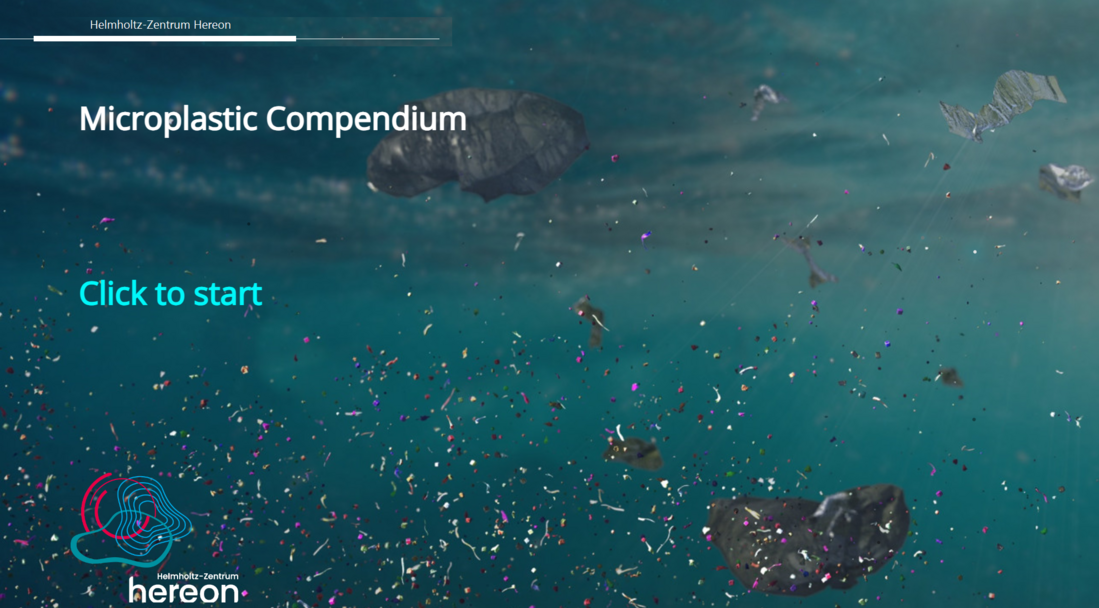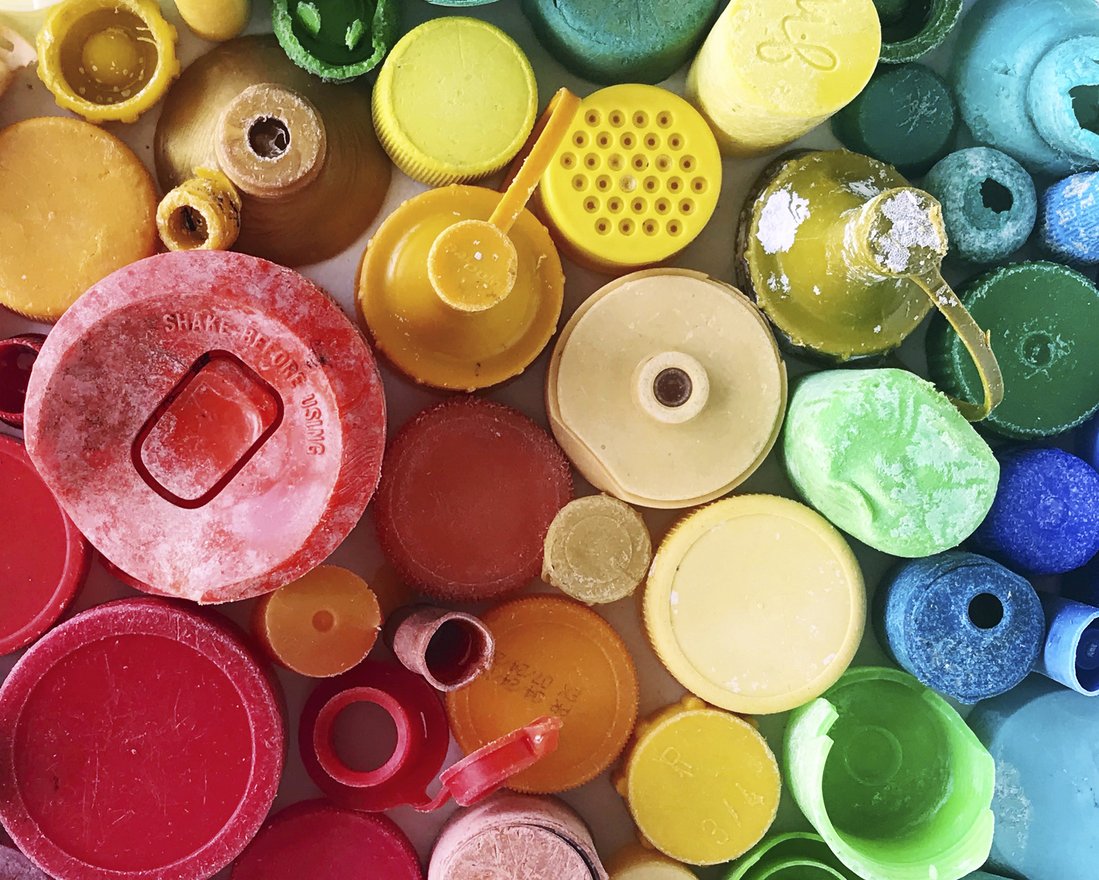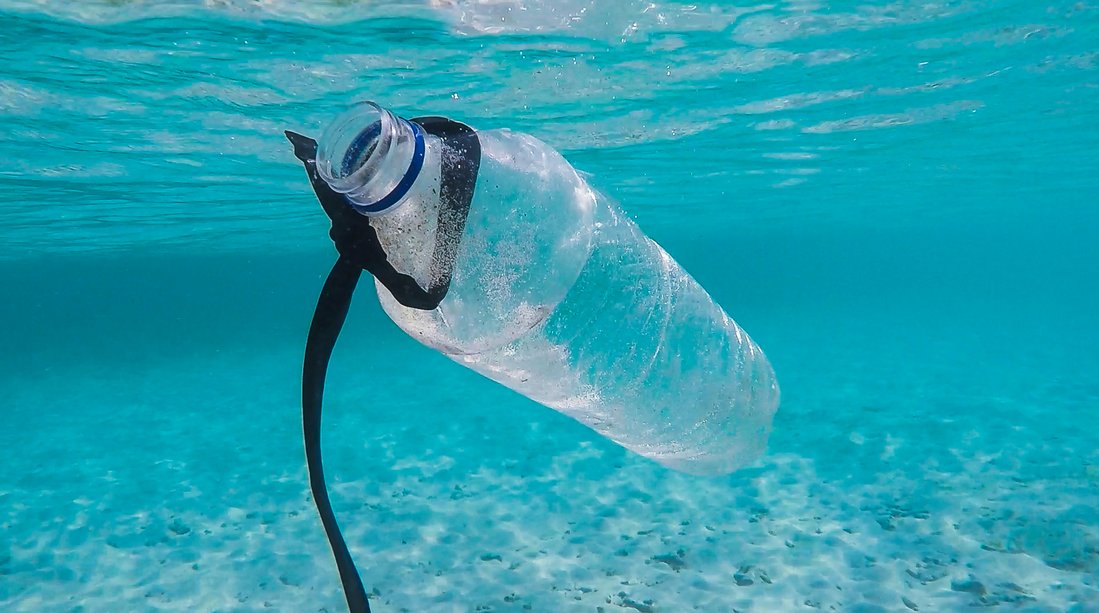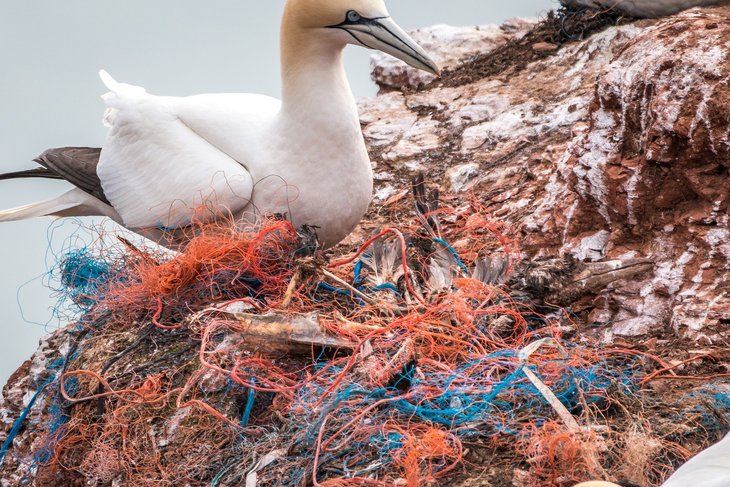
For most people, marine plastic pollution is the most obvious environmental problem facing the oceans. Either because they are familiar with litter on the beach from their own experience or because they follow the many media reports on the deadly effects of plastic waste on whales, turtles and other sea creatures.
The problem with plastic waste in the ocean is enormous and not only visible on beaches: The plastic debris in the world's oceans accumulates due to wind and currents in five major plastic "islands" or, more accurately, garbage vortices.
Three quarters of marine litter is plastic
Plastic makes up a large proportion of marine litter - around three quarters of waste consists of plastics. This group of materials comprises a large number of different materials that consist of carbon-based macromolecules, known as polymers. Depending on their intended use, plastics also contain many different additives such as plasticisers, solvents and hardeners. Plastic is very durable and takes centuries to decompose naturally. If it ends up in the ocean, it does not disappear but accumulates. More than 460 million tonnes of plastic are produced worldwide every year. Between 19 and 23 million tonnes of this ends up as waste in water bodies - also every year. That equates to almost two lorry loads per minute(2).

Although there are successful recycling systems, particularly in Europe, a lot of plastic is still disposed of as waste. The reason for this is that only single-origin plastic can be recycled without any problems. Mixed plastic packaging cannot be recycled profitably. It is either incinerated or exported to other countries. There they are disposed of as waste, often carelessly, and end up in the ocean via various routes.
The European Union categorises around a quarter of the chemicals used in plastics production as potentially hazardous. This means that they are only broken down slowly or incompletely in the environment and can therefore accumulate in organisms and along the food chain. In addition, many of the additives used are toxic.
The problem with microplastics
The longer plastic is exposed to sun, wind, waves and salt water, the more it weathers and breaks down into smaller and smaller pieces. If these pieces are smaller than five millimetres, they are considered microplastics. They are distributed across the entire ocean by wind and currents and hardly decompose at all, but are constantly fragmented further over time. Plastic particles are now travelling around the world in their own material cycle and pollute even remote regions - in the sea ice of the Arctic as well as in deep-sea trenches(3).

However, microplastics do not only come from crushed larger plastic waste. It is also produced on land and is discharged directly into the oceans. One source, for example, is abrasion from car tyres, which is carried into rivers by rain and then into the oceans. Another source is synthetic fibres from clothing, such as the popular fleece jumpers. Washing releases microplastic particles that are not captured by sewage treatment plants. They also end up in the oceans via rivers.
Consequences for the marine environment
How microplastics and the chemical substances contained in plastic affect marine life and humans is not yet known. However, marine animals and plants are clearly suffering from the pollution caused by visible plastic waste. For example:
- Marine animals become entangled in plastic waste (such as in fishing nets or plastic bags) and die because they can no longer get free.
- Marine creatures mistake the plastic waste for food and eat it. They then starve to death with a full stomach or poison themselves with chemical substances in the plastic. This also applies to predators whose prey has previously eaten plastic waste.
- Entire habitats in which plastic waste and/or abandoned fishing nets accumulate are destroyed.

Experts speak of a global environmental problem as a result of which the oceans are losing services and functions worth an estimated 500 to 2500 billion US dollars every year.
This problem can be solved if plastic production is reduced worldwide and comprehensive recycling of plastics is introduced. In the long term, biodegradable substitutes should also be used.
The many volunteers who collect plastic waste on the coasts and dispose of it properly make a very important contribution. Nevertheless, only a tiny fraction of the rubbish that actually drifts in the ocean ends up on the beach.
[Translate to English:]
- (1) Lebreton, L., Slat, B., Ferrari, F. et al. (2018): Evidence that the Great Pacific Garbage Patch is rapidly accumulating plastic. Sci Rep 8, 4666. doi.org/10.1038/s41598-018-22939-w
- (2) Bergmann, M. (2024), Der lange Weg zu weniger Plastikmüll. Standpunkt auf der Website von Helmholtz - Gemeinschaft deutscher Forschungszentren, www.helmholtz.de/newsroom/artikel/der-lange-weg-zu-weniger-plastikmuell/
- (3) Das Alfred-Wegener-Institut, Helmholtz Zentrum für Polar- und Meeresforschung (AWI) forscht zu Mikroplastik im Meer. Eine Übersicht über Forschungsthemen und -ergebnisse gibt es hier: www.awi.de/forschung/biowissenschaften/oekologie-der-schelfmeere/ags/ag-mikrobielle-oekologie/mikroplastik.html





